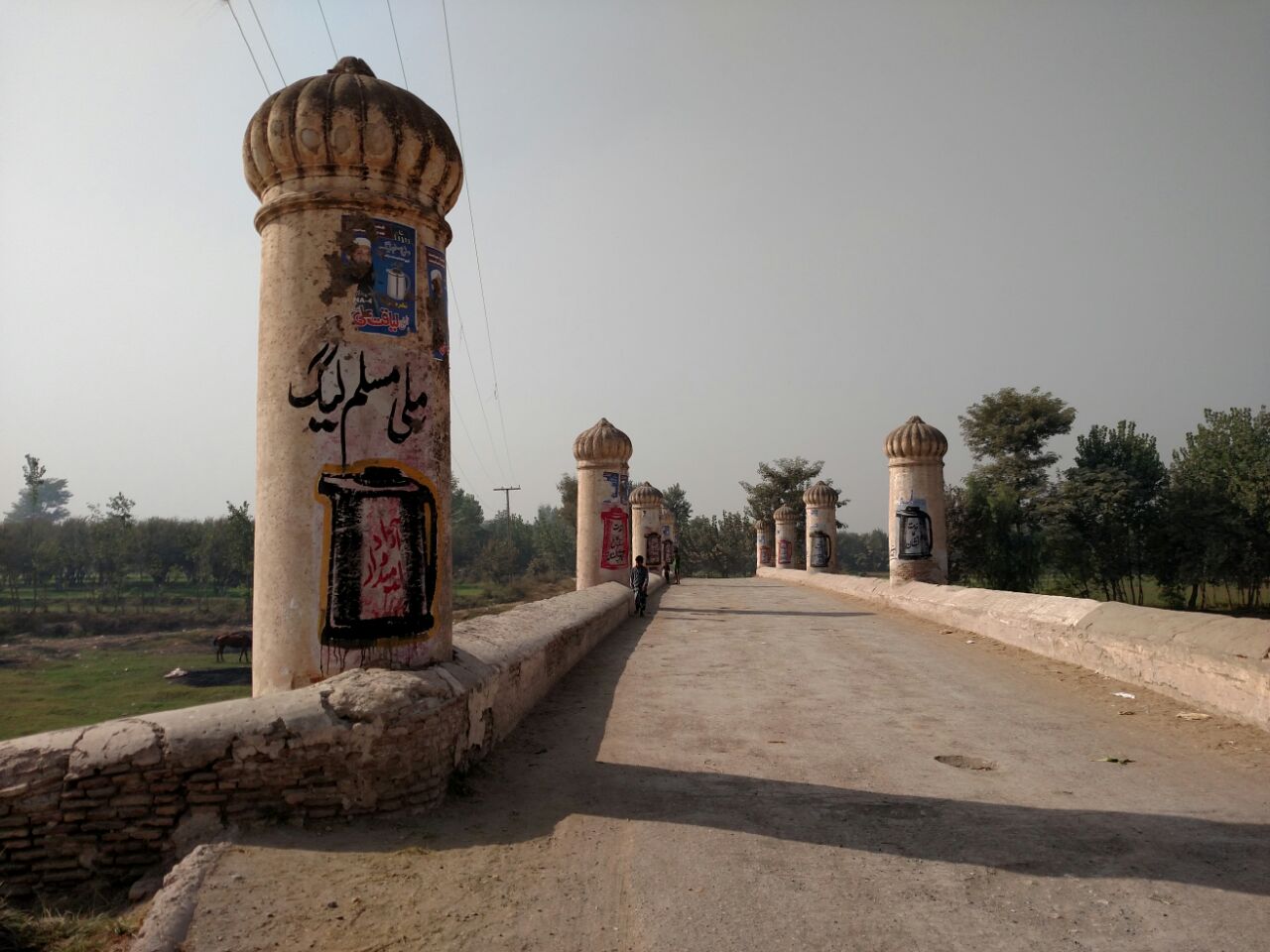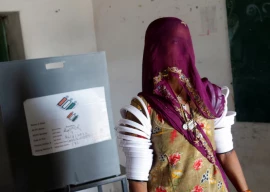
The Milli Muslim League (MML) supported candidate Al-Haj Liaquat Ali, who got the election symbol “thermos”, lost the election but his graffiti would also ensure that people of Peshawar remember his loss.
The candidate’s supporters had painted thermos on every pillar of this iconic bridge which is still standing in its original position since it was built in 1629.
Defacing properties: Wall chalking mars Faisalabad’s sidewalks
The bridge has witnessed a number of elections apart from facilitating commuters to reach their destination for centuries. However, this year’s election left graffiti on the Mughal-era bridge.
The bridge has two different historical contexts one which states that the Mughal emperor Shah Jehan built it in 1629, while, the other says that it was built by Karim by Karim Bakhsh Sethi, a noted philanthropist of Peshawar.
However, both the historical contexts do not carry any documented proof. The bridge is 100 yards long with a total 10 pillars, each of which is six-foot tall. A beautifully crafted onion-shape dome further adorns each pillar of the bridge and the water of the river passes through 12 arched-ways.
Nawaz-ud-Din, a research officer of the Khyber Pakhtunkhwa Directorate of Archaeology and Museum, told The Express Tribune, “Graffiti is a common problem we have been facing at every archaeological site.”
Nawaz said awareness about the importance and value of the historical sites is needed to be spread to secure them from graffiti.
Artist restores defaced murals on Karachi Press Club walls
“People consider it their duty to engrave or write their names and dates on the archeological/historical sites. Most of the times they put religious banners and posters on (antiquities) which become nearly impossible for us to remove them because then they make an issue of it,” he said.
According to Nawaz, the bridge was built by Mughal emperor Shah Jehan and Abdul Latif was its architect when Lashkar Khan was the governor of the area.
“We have been carrying out its conservation from time to time,” he said, adding that their department team inspected it recently before the election and they gave positive report of the bridge.


















-(1)1714116455-0/Heeramandireactions-(2)-(1)1714116455-0-270x192.webp)






1714024018-0/ModiLara-(1)1714024018-0-270x192.webp)









COMMENTS
Comments are moderated and generally will be posted if they are on-topic and not abusive.
For more information, please see our Comments FAQ